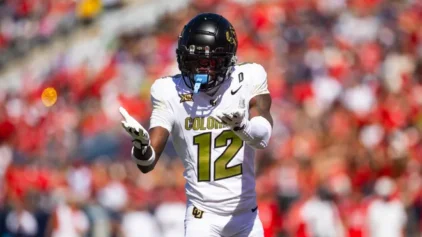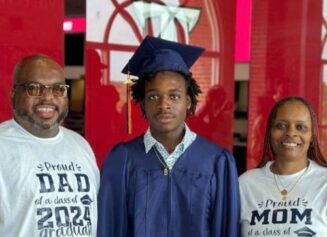Teams don't have the firepower.
Players ain’t delivering the goods.
Gone are the days of the frenzied fast breaks – Paul Westhead’s Loyola Marymount with Hank Gathers and Bo Kimble, giving cats 100 joints a night.
Teams don’t score it like Billy Tubbs’ Oklahoma squads with Mookie Blaylock, Stacey King and Horace Grant. Shoot, that Sooners team scored 81 points in a half against Iowa State in ’88.
The offensive mastery and skill of those squads captivated basketball fans. UNLV lost the National Championship to Duke, in ’91, but “Grandmama,” Stacey Augmon and Tark’s Runnin’ Rebels were offensively explosive and polarizing in defeat. Duke had the big guns – Christian Laettner, Grant Hill and Bobby Hurley – to go shot-for-shot.
Eclipsing triple digits wasn’t the aberration it is now. It didn’t take five overtimes for teams to approach the century mark.
What in the 35-second-shot-clock is going on?
Last season’s men’s Division I teams averaged 68 ppg, the lowest total since 1982 (67.6), and 10 fewer points in a game than the offensively robust ’70s when, ironically, there was no shot clock. You have to jet back to the ’50s, to find another season that tops this one for offensive futility. Field-goal clips are at 1960 levels. And 3-point shooting hasn’t been this janky since the trey was born in 1987.
For example, Northern Illinois set an NCAA record by scoring only four points in the first half of a 42-25 loss to Eastern Michigan this year. Even traditional “run-and-gun” squads like Syracuse are putting up shy-high games of just 80 points. Indiana is the only team ranked in the top 35 to average 80 ppg.
When watching college ball – as exciting as it can be – it’s pretty obvious that offensive continuity is missing. A big part, of course, is that top players bounce to the league early. Good programs don’t keep players long enough to develop dominant offenses, where everyone’s had time to grow and develop skills and chemistry. Nowadays, if a team has a stud, he’s one-and-done. Scoring in college basketball has plummeted in the past 15 years. The drought coincides with this mass exodus of baby ballers into the NBA.
Texas Christian University led the nation in scoring (97.0 ppg) during the ’97-’98 season. The top five scoring teams averaged 90.9 ppg. Since then, the scoring average of the nation’s top team has decreased 16 points. In the ’02-’03 college season, Arizona led the nation (85 ppg) and the top five teams averaged 82.6 ppg. This season, Northwestern State’s 81.0 ppg is top nationally, and the top five scoring teams averaged just 80.2 ppg.
The NCAA claims, as of January, fouls were down to an average of 17.6, nearly a half-foul less than last season, and on pace to be the fewest in NCAA history, going back to 1948.
CBS college basketball commentator Clark Kellogg told Sean Gregory of Time Sports that college basketball’s “culture” is screwed up.
“The AAU, the diminished value of playing to win – playing for rankings, that’s the be-all now,” says Kellogg. “That’s a disservice, that’s a terrible disservice. Because it means nothing. It doesn’t mean anything other than attention. It’s not going to serve you as a player.”
In addition, Kellogg said star athletes are coddled, smothered, and not allowed by coaches and parents to develop on their own. It’s important that a player gets his butt kicked by older heads at the park without mom and dad hawking. It builds character. That’s not happening enough.
“It’s making them tighter, it’s too much, it’s too much,” Kellogg says. “Too much control. Kids don’t get a chance to grow up.”
Not saying that every team has to run-and-gun at Syracuse ’80s levels. Some teams, like Wisconsin and Georgetown, are respected for their defensive prowess. That’s, traditionally, been the great diversity of college basketball: hundreds of teams with myriad styles, philosophies and innovative coaches.
Another prevailing thought is that the pressure to win has coaches less willing to release the reins and let their teams run lob city – free. Many of these old-school coaches are inflexible and talent-suppressing with their offenses.
Where are the masterminds of yesteryear who shaped the game with innovation and risk? Many college games have become boring half-court battles of the bore.
What we are seeing is the manifestation of every soul-selling, revenue-generating bad habit that has rotted college basketball. Like the unpolished freshman with one foot in the League and one foot in the dorm. The And1 era challenged the fundamental teachings of basketball, and turned it into a show.
So fans are left with one shining moment, and a lot of so-so play. The silver lining for NCAA officials is that they really don’t lose any money because of the scoring L. March Madness will always have unshakeable, ritualistic appeal because of the drama, heightened sense of urgency, and what these games mean financially and institutionally to the schools involved.
March Madness smoke screens the deterioration of the actual product. People want winning basketball. It doesn’t have to be pretty.



